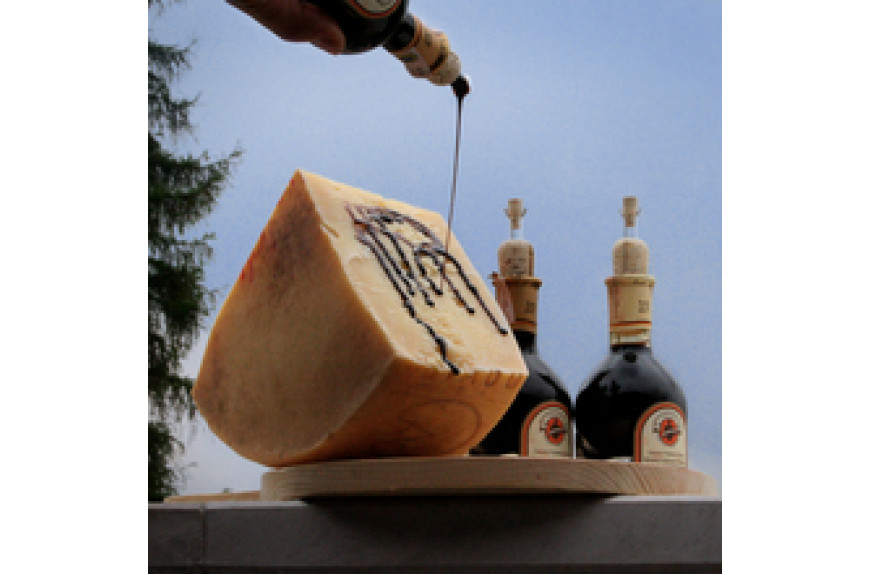Storia dell'aceto balsamico: parte 2

Storia dell'aceto balsamico: parte 2
Tags
Categorie
Le tipologie ufficiali dell'Aceto Balsamico sono: Aceto Balsamico di Modena DOP; Aceto Balsamico di Reggio Emilia DOP; Aceto Balsamico di Modena IGP. Aceto Balsamico Tradizionale di Modena DOP Si produce con uve autoctone prodotte esclusivamente nella provincia di Modena, quali: lambrusco, ancellotta, trebbiano, sauvignon, sganella, berzemino, occhio di gatto. Da queste si ricava un mosto che viene cotto per un lungo periodo fino a essere ridotto; dopodiché viene depositato in botticelle di differenti capacità, e legni diversi, quali il CASTAGNO, che gli conferisce i tannini e quindi l'aiuta nel colore scuro, il GELSO, che lo concentra più velocemente, il GINEPRO che cede sostanze resinose, il ROVERE con il tipico profumo di vaniglia. Con la tecnica dei travasi, ogni anno, o comunque a ogni cambio di stagione, una parte di aceto viene travasata dalla botte più grande (di un tipo di legno) a una più piccola (di un legno diverso...). La durata di questo processo non può essere inferiore ai 12 anni e in questo caso il prodotto si chiamerà AFFINATO, mentre, se l'invecchiamento arriverà fino a un minimo di 25 anni, risulterà in etichetta come EXTRAVECCHIO. Anche la bottiglia dove è contenuto questo Aceto Balsamico Tradizionale DOP ha la sua importanza, ed è uguale per tutti i produttori consorziati. Ha capacità di 100ml, sferica con base rettangolare, a serie numerata e con il contrassegno non riutilizzabile. Aceto Balsamico Tradizionale di Reggio Emilia DOP Le caratteristiche di disciplinare sono simili a quello di Modena, salvo il fatto che, ovviamente, raccolta delle uve, invecchiamento e imbottigliamento vengono eseguiti nella provincia di Reggio. Questo Aceto viene prodotto in 3 tipologie: bollino aragosta, bollino argento e bollino oro. Aragosta: invecchiamento non inferiore ai 12 anni; Argento: tra i 12 e i 25 anni. Oro: almeno 25 anni; Le ampolle per l'aceto tradizionale di Reggio sono anch'esse specifiche e sono di capacità di 100ml, di forma cilindrica a goccia. Come per l'aceto tradizionale di Modena, anche per questo aceto esiste una commissione di assaggio all'interno del consorzio dei balsamici, che tutela i produttori e i consumatori. Aceto Balsamico di Modena IGP È totalmente diverso dai precedenti: si parla di un prodotto che ha un disciplinare molto meno restrittivo e qui i produttori "si sbizzarriscono". La grande differenza è che questo aceto viene prodotto con mosto cotto e aceto di vino! Non viene vietata l'aggiunta di zucchero e le uve sono più o meno le stesse usate per il tradizionale, ma possono provenire anche da altre provincie. È sufficiente che l'imbottigliamento avvenga nella provincia di Modena o di Reggio Emilia, e l'IGP è pronto! Ne esistono due versioni: l'aceto balsamico di Modena IGP e l'aceto balsamico di Modena IGP invecchiato. Il primo è invecchiato tra i sessanta giorni e i tre anni, il secondo oltre i tre anni. Dopo l'invecchiamento, anche questo in botti di legni pregiati, il prodotto viene imbottigliato in recipienti che possono essere di diversi materiali, dal vetro alla ceramica, al legno, con capacità da 0,25 fino addirittura a 5lt!
